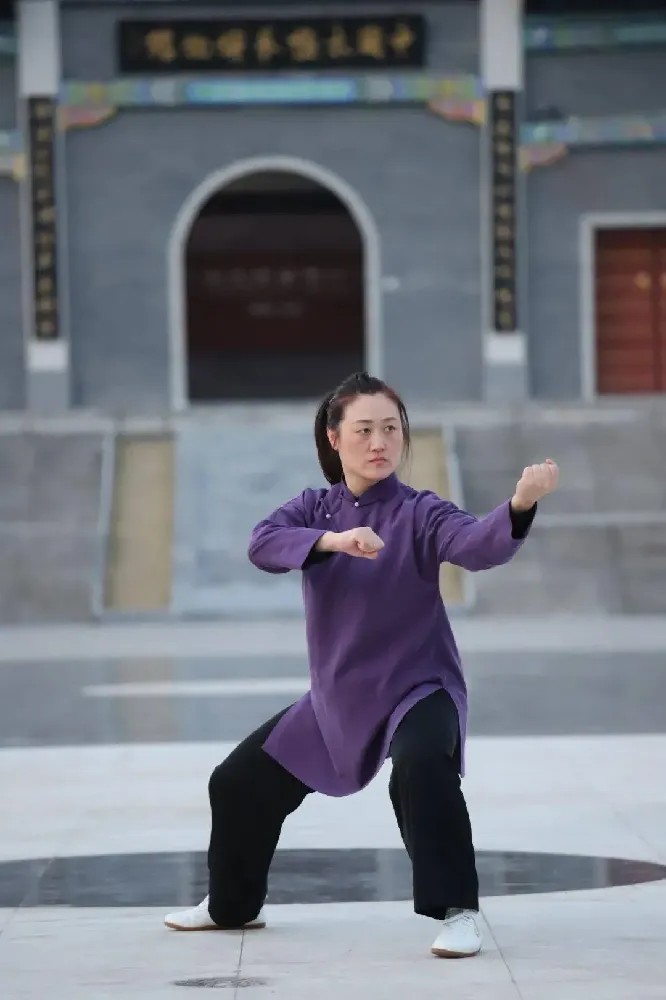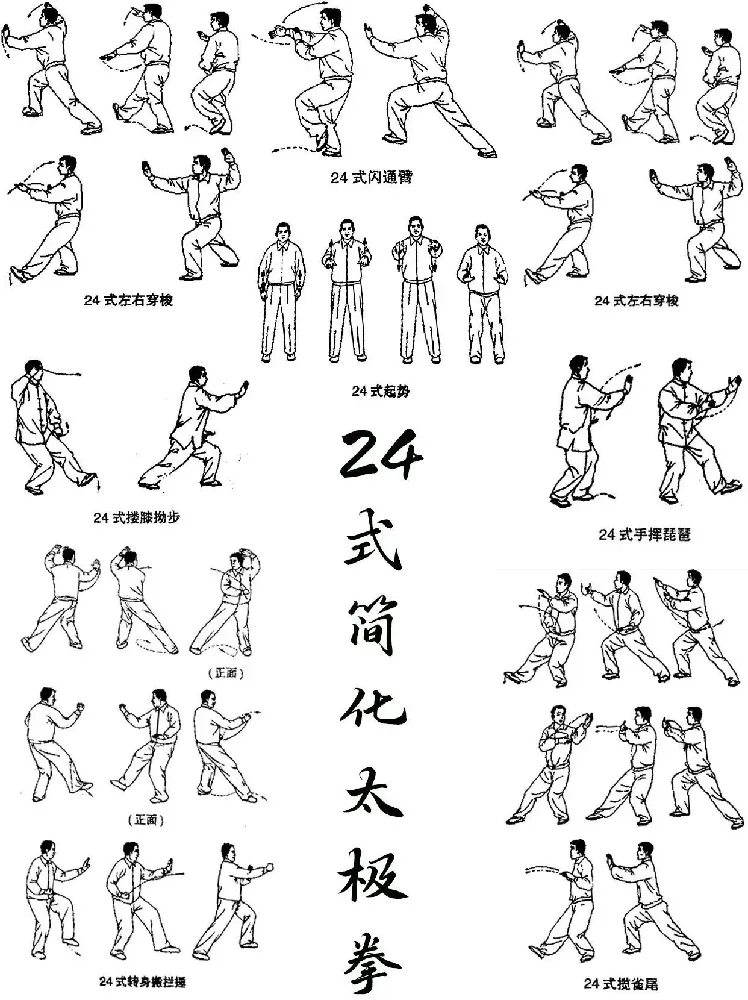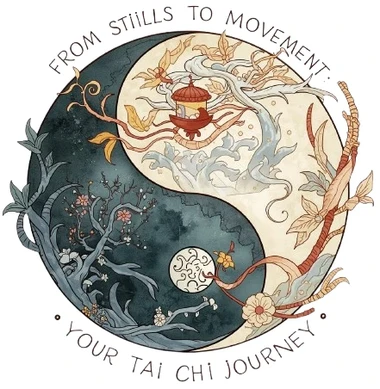Your Dojo, Your Path
You want to learn Tai Chi by yourself. The idea excites you, but maybe it also feels a little daunting. Classes don’t fit your schedule. The nearest studio is too far. Or perhaps you simply prefer learning at your own pace, in your own space.
Here’s the good news: in today’s digital age, you can absolutely learn Tai Chi by yourself. With the right approach, you can avoid the common traps of self‑study and build a practice that is safe, effective, and deeply rewarding.
I know what you might be thinking: “But don’t I need a teacher to do this right?” That doubt is natural. Yet the truth is, while a teacher can accelerate your progress, you can still make remarkable strides on your own. The key is structure.
Not random YouTube scrolling. Not copying moves without context. What you need is a roadmap. The Complete Beginner's Guide to Tai Chi.
That’s what this article offers: a practical, step‑by‑step guide for self taught Tai Chi. We’ll explore the benefits and challenges, the four pillars of solo learning, a 12‑week plan, and the pitfalls to avoid. Think of it as your starter kit for becoming your own first teacher.
💡 Exclusive Tip: Before you even start, reframe your mindset. You’re not “missing out” by learning alone—you’re gaining flexibility, freedom, and the chance to build a practice that fits your life.

The Honest Truth: Pros and Cons of Self‑Taught Tai Chi
Let’s be real. Tai Chi at home for beginners has both perks and pitfalls. Pretending otherwise won’t help.
So let’s lay them out clearly.
The Advantages
- Flexibility: Practice anytime, anywhere. Morning in your living room, evening in the park—it’s your choice.
- Low cost: Many free online Tai Chi resources exist, and even paid courses are cheaper than studio memberships.
- Personal pace: You can repeat a move a hundred times without feeling embarrassed. You set the rhythm.
The Challenges
- No instant feedback: Without a teacher’s eye, you may develop habits that are hard to unlearn.
- Information overload: The internet is full of videos. Which ones are trustworthy? Which ones confuse more than they clarify?
- Lack of community: Practicing alone can feel isolating. Motivation sometimes dips.
So, is how to start Tai Chi without a teacher a doomed idea? Not at all. The solution is to maximize the advantages while minimizing the risks. That’s where the four pillars of self‑study come in. Getting Started with Tai Chi / Tai Chi Fundamentals.
💡Exclusive Tip: Write down your “why.” Whether it’s stress relief, balance, or curiosity, having a clear reason will keep you motivated when the novelty fades.

The Four Pillars of Learning Tai Chi by Yourself
If you want to succeed, you need structure. These four pillars are your foundation.
Pillar One: Build Your Roots
Every tree needs roots. Every Tai Chi student needs basics.
Start with:
- Wuji stance: feet shoulder‑width, knees soft, spine tall.
- Breathing: slow, natural, deep into the belly.
- Relaxation cues: sink shoulders, drop elbows, soften chest.
- Empty and full: learn to shift weight fully from one leg to the other.
For the first 1–2 weeks, don’t rush into forms. Just stand, breathe, and feel. This is where self taught Tai Chi begins—not with choreography, but with awareness.
💡 Exclusive Tip: Treat standing practice like brushing your teeth. Short, daily, non‑negotiable. Five minutes is enough to start.
Pillar Two: Choose Your “Mother Form”
There are many Tai Chi styles, but for Tai Chi at home for beginners, the simplified 24‑form is ideal. Why?
- It’s globally recognized.
- Resources are abundant.
- It’s short enough to learn, but complete enough to feel whole.
When looking for the best way to learn Tai Chi online, check:
- Does the instructor explain principles, not just moves?
- Are camera angles clear?
- Do they have lineage or credible background?
💡 Exclusive Tip: Don’t binge ten different teachers. Pick one trusted source and stick with it for at least a month. Consistency beats variety.
Pillar Three: Structure Your Learning
Random practice leads to random results. Structure creates progress.
- Break it down: Learn one move at a time. Divide it into steps—footwork, hands, weight shift.
- Mirror practice: Follow along slowly with video, like a dance partner.
- Record yourself: Use your phone. Compare with the demo. This is how you become your own teacher.
This method prevents the most common self learning mistakes: rushing, copying without understanding, and ignoring details.
💡 Exclusive Tip: When you record, don’t just look for errors. Look for progress. Celebrate what’s smoother than last week.
Pillar Four: Create Your Support System
Learning alone doesn’t mean being lonely. Build a system that supports you.
- Dedicated space: Even a corner of your room can be your Tai Chi zone. This is your Tai Chi practice space.
- Practice log: Write down what you did, how it felt, what confused you.
- Online community: Join a forum or group. Share wins, ask questions, stay inspired.
💡 Exclusive Tip: Ritual matters. Light a candle, play soft music, or wear the same practice clothes. Small rituals anchor the habit.

A 12‑Week Roadmap: From First Stance to Flowing Form
Now let’s put it all together. Here’s a practical plan to learn Tai Chi by yourself in three stages.
Start Your Tai Chi Journey Here.
Stage One: Laying the Foundation (Weeks 1–4)
- Focus: Wuji stance, basic steps (bow stance, empty stance), hand shapes, opening posture.
- Practice: 3–4 times per week, 15–20 minutes.
- Goal: Comfort with standing, shifting weight, and starting movement.
Stage Two: Building the Form (Weeks 5–8)
- Focus: First 12 moves of the 24‑form.
- Practice: Learn 2–3 moves per week. Always review previous ones.
- Tool: Start recording yourself for feedback.
- Goal: String together half the form with reasonable flow.
Stage Three: Flow and Depth (Weeks 9–12)
- Focus: Final 12 moves.
- Practice: Complete the form, refine transitions, coordinate breath.
- Challenge: Try short sections with eyes closed to improve body awareness.
- Goal: Perform the full form smoothly, with calm breath and steady balance.
💡 Exclusive Tip: Don’t chase perfection. Chase consistency. A wobbly daily practice beats a flawless form you never repeat.
Common Pitfalls of Learning Tai Chi by Yourself (and How to Avoid Them)
Self‑study is empowering, but it comes with traps. Let’s shine a light on them so you don’t stumble.
Pitfall 1: Trying to Learn Too Much Too Fast
It’s tempting to binge videos and attempt the whole form in a weekend. But Tai Chi is not Netflix. It’s more like gardening. Seeds need time.
- Why it’s a problem: You end up with shallow knowledge of many moves, but mastery of none.
- Solution: Stick to the “one move at a time” rule. Don’t move on until the last one feels natural.
💡 Exclusive Tip: Write the name of the move you’re working on and tape it to your wall. Focus on that one until it feels like second nature.
Pitfall 2: Focusing Only on Appearance
Many beginners obsess over looking graceful. They copy the outer shape but miss the inner meaning.
- Why it’s a problem: Without intention, Tai Chi becomes empty choreography.
- Solution: Ask yourself: What is this move doing? Even if you’re not training for combat, knowing the martial intent gives the movement purpose.
This avoids one of the biggest common self learning mistakes: practicing hollow forms.
Pitfall 3: Skipping the Basics
Standing, breathing, weight shifting—these seem boring compared to flowing forms. But they’re the foundation.
- Why it’s a problem: Without basics, your form collapses under pressure.
- Solution: Begin every session with Wuji stance and basic drills. Think of them as your warm‑up and your anchor.
Pitfall 4: Chasing “Qi Sensations” Too Early
Some learners get obsessed with feeling tingling or heat. They force it, or worse, fake it.
- Why it’s a problem: It distracts from structure and relaxation.
- Solution: Focus on alignment and intention. Sensations will come naturally, often when you stop looking for them.
💡 Exclusive Tip: Replace the question “Do I feel Qi yet?” with “Am I more relaxed than yesterday?” That’s the real progress marker.
Measuring Progress in Tai Chi
Without a teacher, how do you know you’re improving? Here’s how to track both external and internal progress.
External Signs
- Movements feel smoother and less jerky.
- You can complete more of the form without forgetting steps.
- Balance improves—you wobble less in stances.
- Coordination between arms and legs feels more natural.
Internal Signs
- After practice, you feel calm, not exhausted.
- You notice your breath slowing down on its own.
- Daily stress feels easier to handle.
- You sense your body more clearly—posture, tension, relaxation.
- These are the real indicators, not whether you look like a YouTube master.
💡 Exclusive Tip: Keep a simple journal. Each week, write one external change and one internal change. Over time, the list will surprise you.
When to Seek a Teacher
Here’s the truth: you can go far on your own. But there comes a point when outside eyes help.
Signs You’re Ready for Guidance
- Plateau: You’ve practiced for months but feel stuck.
- Persistent errors: You notice the same mistake in every recording and can’t fix it.
- Deeper curiosity: You want to explore push hands, weapons, or lineage‑specific details.
At this stage, a teacher doesn’t replace your self‑study—they refine it. Even one workshop or online consultation can unlock years of progress.
💡 Exclusive Tip: Don’t wait until you’re “good enough” to seek help. Teachers appreciate motivated students, even beginners.
Blending Self‑Study with Occasional Guidance
Think of your journey as a hybrid. Daily practice is self‑driven. Periodic check‑ins with a teacher—online or in person—keep you on track.
- Workshops: Great for corrections and inspiration.
- Online coaching: Submit a video, get feedback.
- Community classes: Drop in occasionally to feel group energy.
This way, you keep the freedom of self taught Tai Chi while benefiting from expert eyes.
The Bigger Picture: Why Self‑Learning Works
Learning Tai Chi alone isn’t just about convenience. It’s about empowerment. You become your own observer, your own motivator, your own guide.
- You learn discipline by showing up.
- You learn awareness by recording and reflecting.
- You learn patience by repeating the basics.
And in the process, you discover that Tai Chi is not just a form—it’s a mirror. It reflects your habits, your mindset, your growth.
💡Exclusive Tip: Treat every mistake as data, not failure. Each wobble, each forgotten step, is feedback from your body.
Conclusion: You Are Your Own Best Teacher
Here’s the truth: you can absolutely learn Tai Chi by yourself. The digital age has given us tools our ancestors never dreamed of—videos, communities, structured guides. What matters most is not whether you have a teacher in the room, but whether you show up for yourself.
Self‑study is not second‑best. It’s a different path. It teaches discipline, patience, and self‑awareness in ways that even group classes sometimes can’t. You learn to observe yourself, to listen to your body, to celebrate small wins. That’s the heart of Tai Chi.
And yes, there will be moments of doubt. You’ll wonder if your stance is correct, if your arms are too high, if you’re “doing it wrong.” But remember: Tai Chi is not about perfection. It’s about presence. Every wobble, every correction, every repetition is part of the art.
💡 Exclusive Tip: When doubt creeps in, return to Wuji stance. Stand tall, breathe, and remind yourself: “I am practicing. That is enough.”
Gentle Rebuttal: “You Can’t Learn Without a Teacher”
This myth lingers. Some people insist that without a master correcting you, you’ll never progress. But look around: countless people have built strong practices through self taught Tai Chi, guided by online resources, books, and their own persistence.
Of course, a teacher can refine your skills. But the absence of one doesn’t mean the absence of progress. Think of it like learning guitar. A teacher accelerates growth, but many musicians start strumming alone in their bedrooms. Tai Chi is no different.
The key is humility. Know what you can do alone, and know when to seek guidance. That balance is itself a Tai Chi lesson—Yin and Yang in practice.
Final Encouragement
Your living room can be your dojo. Your phone can be your mirror. Your breath can be your teacher.
Start small. Stand daily. Learn one move at a time. Record yourself. Reflect. Celebrate. That’s how you build a practice that lasts.
And remember: Tai Chi is not just about forms. It’s about how you carry yourself through life. More balance. More calm. More awareness.
Begin Your Journey Today
If you’re ready to take the next step:
- Join our “Self‑Paced Tai Chi Foundation” course. It offers a week‑by‑week curriculum, premium video libraries, and the option to submit videos for instructor feedback.
- Or start simple: Download our FREE “Self‑Learning Checklist & Practice Planner.” Use it to organize your weekly sessions and track your progress.
Your journey doesn’t need to wait for the perfect class or the perfect teacher. You already have the most important guide: yourself.
So take a breath.
Step into Wuji.
Begin.
FAQ: How to Learn Tai Chi by Yourself
Can I really learn Tai Chi by myself?
Yes. With structure and patience, you can absolutely learn Tai Chi by yourself. While a teacher can accelerate progress, self‑study builds discipline and awareness. The key is following a roadmap instead of random videos.
What is the best way to start Tai Chi without a teacher?
The best way to start Tai Chi without a teacher is to focus on foundations first: Wuji stance, breathing, weight shifting, and relaxation. Then choose a simple form like the 24‑style, and learn one move at a time.
Is self‑taught Tai Chi effective for beginners?
Yes. Self taught Tai Chi is effective if you: Practice consistently. Use reliable resources. Record yourself for feedback. Avoid rushing through forms. It’s not about perfection, but steady progress.
What are the common self‑learning mistakes in Tai Chi?
Some common self learning mistakes include: Trying to learn too many moves too quickly. Copying shapes without understanding intent. Ignoring basics like stance and breath. Chasing “Qi sensations” instead of structure.
What free online Tai Chi resources can I use?
There are many free online Tai Chi resources: YouTube channels from certified instructors. Community forums and discussion groups. Free PDFs or practice planners. Choose resources that explain principles, not just choreography.
How do I create a Tai Chi practice space at home?
To create a Tai Chi practice space: Clear a small area (2x2 meters is enough). Keep it uncluttered and quiet. Add small rituals (music, mat, or candle) to anchor the habit.
How can I measure progress in Tai Chi without a teacher?
Measuring progress in Tai Chi can be done through: External signs: smoother moves, better balance, longer sequences. Internal signs: calmer mind, deeper breath, less stress. Journaling: track weekly changes in how you feel.
What is the best way to learn Tai Chi online?
The best way to learn Tai Chi online is to: Pick one trusted instructor. Follow a structured course. Use slow‑motion and mirror practice. Record yourself and compare. Consistency matters more than variety.
When should I seek a teacher after self‑study?
Seek a teacher when: You feel stuck for months. You notice persistent errors you can’t fix. You want to explore push hands, weapons, or lineage‑specific details. Self‑study takes you far, but guidance refines your path.
Is Tai Chi at home for beginners safe?
Yes, Tai Chi at home for beginners is safe if you: Move slowly. Avoid forcing stretches. Focus on balance and posture. Stop if you feel pain.
